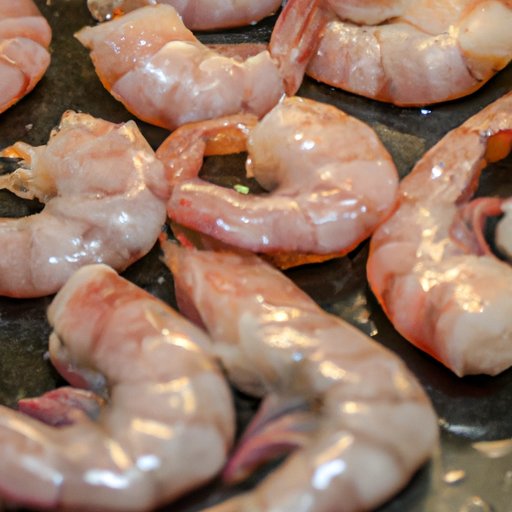
Introduction
There’s nothing worse than biting into a rubbery or tasteless shrimp. It’s a common problem, and unfortunately, it can ruin an entire dish. The good news is that it’s easy to cook perfect shrimp every time with just a little knowledge. This article will provide a comprehensive guide to cooking shrimp and help you know exactly when it’s done.
A Beginner’s Guide: How to Tell When Shrimp is Perfectly Cooked
Before we dive into cooking methods, let’s look at the different types of shrimp available. Shrimp can be raw or cooked, deveined or not, shell on or off. When it comes to cooking methods, you have a range of options, including boiling, grilling, sautéing, baking, and more. To ensure perfectly cooked shrimp, there are a few tips you should keep in mind. It’s important to season the shrimp properly, consider the cooking temperature, and pay close attention to the timing.
A Handy Guide to Cooking Shrimp to Perfection: How to Know When it’s Done
There are several methods used to cook shrimp, each with its own set of cues to let you know when it’s done. Boiling shrimp is a popular option – when the shrimp turn pink and start to float to the top of the water, they’re ready. Grilled shrimp will have noticeable grill marks and firmness to the touch. Sautéed shrimp are ready when they’re firm and opaque. Baked shrimp will have a pink, opaque color. Always keep an eye on the time, as overcooking can lead to tough and rubbery shrimp.
Sizzling and Succulent: Tips for Knowing When Your Shrimp is Cooked to Perfection
For an even more precise method of checking shrimp for doneness, consider using a thermometer. The internal temperature of cooked shrimp should be between 120°F and 145°F. This is especially important if you’re cooking larger shrimp or shrimp with the shell on. The shell can trap heat, causing the shrimp to cook unevenly. Be sure to check the temperature in the thickest part of the shrimp.
From Undercooked to Overcooked: Here’s How to Perfect the Shrimp-Cooking Game
Undercooked shrimp can be a health risk, while overcooked shrimp can be tough, chewy, and unappetizing. To avoid these common issues, always follow cooking guidelines and use reliable methods to tell when the shrimp is done. Aim for an optimal cooking time and temperature based on the size, variety, and recipe you’re using. Keep in mind that shrimp cook quickly, so even 30 seconds can make a noticeable difference in texture and flavor.
Not Too Soft, Not Too Hard: How to Identify the Perfectly Cooked Shrimp Every Time
So how can you identify perfectly cooked shrimp? Look for a pink, opaque flesh and a slightly curved shape. Overcooked shrimp will curl tightly, while undercooked shrimp will remain straight. The texture should be firm but not tough or rubbery. You can also try the old-fashioned eye test – the shrimp should look and feel cooked, and you’ll know when it’s ready to eat.
Conclusion
Cooking perfectly cooked shrimp is a skill that takes practice, but with the tips outlined here, you’ll be able to identify when it’s done to perfection every time. Remember to keep track of time, temperature, and appearance, and don’t be afraid to use a thermometer for precision. With a little practice, you’ll master the art of cooking succulent and delicious shrimp to impress your family and friends.




